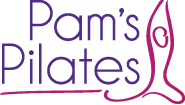Media articles and TV documentaries are awash with the message ‘ we must move more and sit less’. However, the difference between how we were born to move and how we are actually moving today is vast. We may think we are moving about quite well but the reality is we could be moving so much better by moving more and more of our parts. Despite our best intentions we end up causing damage to our shoulders, spine, pelvis, hips and knees; all because of our limited range of movement.
Chairs, shoes, desks, cars, clothing and repetitive moving along flat, even surfaces (pavements and treadmills) are modern incarnations that reinforce a very narrow and limited range of movement.
Adding practices such as Pilates will benefit us and increase our range of movement. One of the Pilates principles is alignment. As an instructor my aim is to address and possibly reverse the consequences of a ‘born to sit’ lifestyle. Those consequences include tight calves, hamstrings, hip flexors and weak glutes, to name but a few. By making the smallest adjustments we can recruit more muscle, be more stable around relevant joints, create the necessary forces for new cellular adaptions and ultimately change the way we walk for instance, thus reducing our risk of repetitive strain injuries.
For those new to the corrective alignment conversation, standing posture is a very good place to start. By simple addressing alignment of the feet, knees, pelvis and bringing the legs to vertical, you could make a significant contribution to relieving chronic complaints from low back pain to that problematic knee twinge.

